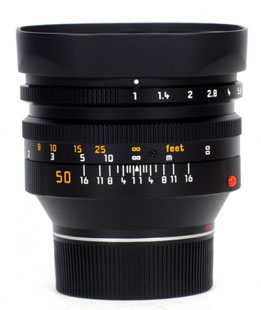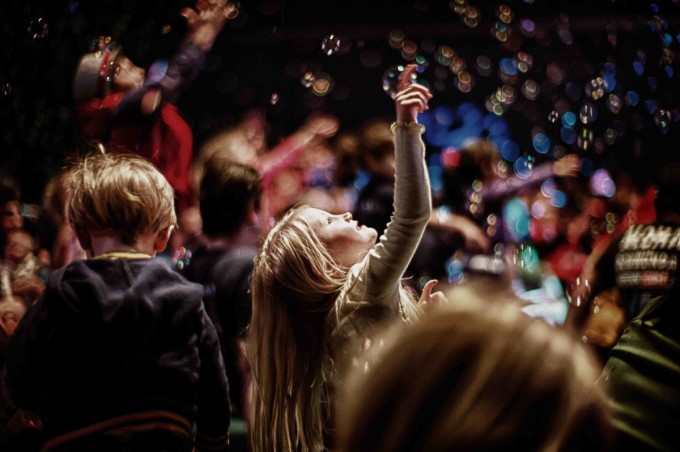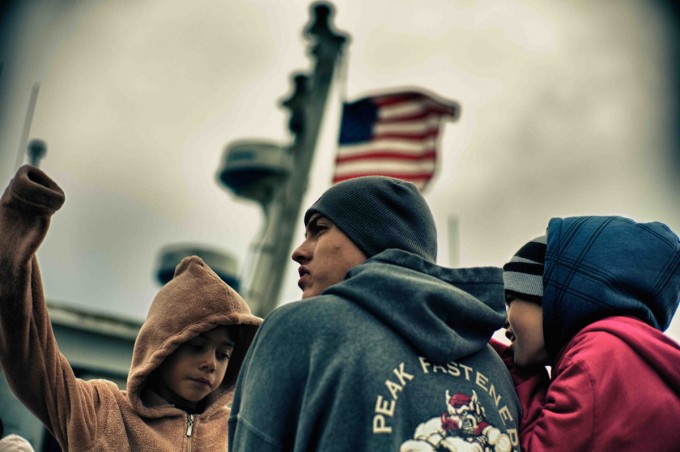MY THREE LEICA KINGS by Tuananh Nguyen
A shout out to Mr. Steve Huff for setting us up with the sweetest and most bitchin’ photography site to date! I also have to thank all of you folks that have written some of the most entertaining, knowledgeable, and opinionated “inspirations” that have not only inspired my photography, but I am sure also to the growing members on this site. Although I understand the need for numerous reviews on newer products, I’ve always enjoyed reading articles on the “classics”, if not just as much, but maybe event a tad more. So on this note, I wanted to share my knowledge on three of Leica’s classical lenses, or what I would call as “my three kings”.
[ad#Adsense Blog Sq Embed Image]
After my initiation into the Leica clan many years ago, I’ve had a chance to use some of the best optics in the world in both the pre- and post-digital age. I started out this love affair with my beloved Leica M2 and 50mm Summicron Dual Range, which I believe is as perfect as a camera can be. Its classic lines, dependability, and “glowing” images matched my style of photography and it also gave validation for my abandonment of the SLR idea. I’ve since owned both the M8 and M9, which I feel are the epitome of the digital rangefinder. The M9’s pixel count, full-frame CCD image characteristics, and classical build were all that I would ever dream in a camera (even in light of the advent of the M10 release).
Over the years, I’ve had countless opportunities to lend and own a long list of Leica lenses. But after a lot of “soul searching” I’ve concluded that there are three lenses that I found to have earned the title of “My Three Kings”: 50mm Noctilux-M (f/1.0 attached hood), 35mm Summicron-M (Type IV), and 90mm Summicron (Generation II, red numbering). Below, I will briefly summarize why I believe that these lenses are my favorite, but I will also include drawbacks when it is necessary.
Leica 90mm Summicron (Generation II)
After trying out a diverse group of Leica-M 75mm, 85mm, 90mm, and 135mm lenses, I’ve concluded that the 90mm Summicron was the best for me. Although the lens is much larger than the later editions, especially with the built in tripod mount, and odd filter size, I felt that it gave the most character out of all of these longer focal length lenses. As a portrait lens, the 90mm Summicron is soft and gives a nice glowing rendition, which is even more pronounced in the B&W images that it produces. Although not the sharpest lens in the Leica lineage, its excellent DOF/”bokeh” is silky smooth and excellent as a pure portraiture lens.
Leica 35mm Summicron-M (Type IV)
In the 1990’s, Leica lenses were expensive but not to the extent as they are today, especially in the used market. I was able to collect several editions of the 35mm and give them a thorough “shootout” before I decided which one was the keeper. I also tested out some wider angle Leica lenses, but I realized that the additional viewfinder was often obtrusive and it just didn’t fit my style of street photography with the Leica M2. The Type IV, also renowned as “The King of Bokeh” was my choice, simply because it was very compact and light, the replaceable lens hood was very affordable and easily attainable, and the new concaved focusing tab was an excellent focusing tool for such a small lens. This lens is exceptionally sharp but maintains that Leica “glow” and signature, more so than the other generations at this focal length. I chose this lens above all other wide-angles and aperatures because I felt that it had great balance for price, image quality, and compactness.
Leica 50mm Noctilux-M
Many Leica users and experienced photographers collectively know that the Noctilux is a very prized optical monster. It doesn’t just quiver under low-light condition; it actually lives for it, as Dr. Mandler would agree. This is my unequivocal favorite lens of all time. You might read online and various literature about the Noctilux’s focusing issues with the digital-M, lack of sharpness, extreme vignettes, enormous size, and countless other complaints. What is my response to all of these issues? Yes, I would have to agree with all of them! But I guess this is what taming a beast like the Noct is all about. Yes it requires a little love from the elves to make it perfectly adapted to your digital-M body. Yes, it is not the sharpest lens, but that’s the reason for its magic glow and signature bokeh. Images shot with a Noctilux can only be described as watercolors to me; the background always gives a very distinct paintbrush flavor while the outline of the subject usually glows with a warm soft texture. Yes, vignettes are a part of this lens’ repertoire, some folks hate it, but many like myself love it. As for the size argument, although the Noctilux is one of the largest of the Leica lenses, it is by far much smaller than many other normal focal length lenses in production. I was tempted to swap my classic Noctilux for the newer f/0.95, but after several days of using it at the Leica Akademie last year, I decided that the older model’s characteristics was more preferable for my taste.
These three lenses have many different attributes, yet the unique characteristics that they showcase are unmistakably, Leica. Will I use other cameras and lenses in the future, I am sure I am not immune to the shutterbug nor am I too stubborn or ignorant to say that this brand or that brand is the best for everyone. What I can say is that I love the Leica M system, for its simplicity, signature images, and obedience to what the idea of photography truly is – an art form.










I agree that those pictures are completely over processed. They lose all ‘magic’ (if magic exists) that these lenses produce.
90mm and 35mm Summicrons pictured are the current versions and are not the ones he is talking about in the piece. A bit misleading.
Hi Tuananh Nguyen,
can you please name/ align the photos with the lenses you used, that would be interesting and helpful.
1. Soap bubbles = ?
2. Older men = ?
3. Kids/ Tenagers = ?
4. Public trabsport?
I sent in quite a handful of images for Steve to select from and these were the four that were selected. Here is a brief description of what lens I used and some extra detail on the images.
Image 1: This image was shot with the 50mm Noctilux in complete darkness with only a main spotlight shining directly on the little girl. It was shot handheld and I was kneeling, so it was quite a difficult shot to pull off and I was glad it came out the way it did. The “bokeh balls” and the colorful painted background are characteristics of the classic Noctilux, one of the main reasons why I love this lens. The background did have some ambient light, but the room was extremely dark and the kids were jumping and running around trying to capture the bubbles. I actually found the little boy on the left side to be very interesting, whilst everyone else in the room is busy at play, his head is down, his shoulders slump, and a very different way about him. I found that his odd demeanor to be the true meaning or soul to this photograph, more so than where the spotlight governs. Again, very subjective and I would love to hear your take on it. I believe the setting was at f/1.0, 1/60, ISO640.
Image 2: This image was shot at the Salton Sea of a homeless man taking quarters at one of the abandoned homes. If you have never been to the Salton Sea you should definitely make the trip, it’s a totally different world out there….very much like post-apocalyptic. Filled with abandoned real estate, mystic boat decks, hundreds of dead fishes, melancholic leafless trees, and all settled in a beautiful background of every color you can think of, especially at sunrise/sunset. This shot was with the 35mm Summicron and it also shows how sharp the lens can actually get. Settings were at f/8, 1/60, ISO250.
Image 3: This image was take literally moment from going under the Golden Gate Bridge in San Francisco, CA. These three children were sitting right in front of me on a short boat ride around the bay. I love the image because it gives it a very mystic feel and I love the distant stare that the older middle subject is giving while the other two seemed lost at play. The patriotic flag brushed slightly across the background really gives the top half of the image a proper fullness. To me, the foggy S.F. mystic feel, an ambitious youth looking into the future, and the red-white-and-blue up above….it feels great to be an American!!! Settings at f/2.0, 1/2000, ISO160. 90mm Summicron.
Image 4: This one was also shot by the Noctilux on my trip to San Francisco on the trolly around sunset. I wish the image was sharper, but there was a lot of vibrations and elbow-to-elbow action on the trolly. Moreover, I couldn’t resist those “eyes”. It was penetrating, luring, and powerful. Sometimes I feel that the sharpness of and image or even errors in exposures can be sacrificed for an image that yields a deeper meaning or one that has a soul to it. Sometimes technology clouds our senses and we are obsessed with how sharp and “perfect” an image should look, but I think more importantly is how an image should make you feel. Setting f/1.0, 1/25, ISO800
I hope my brief description of each image will help you understand the situation they were taken under, the settings I used, and which lens corresponded with which photograph. Feel free to drop a comment or two. Thank you for your response.
wow. just wow. i’m speechless.. wow. wow wow
Incredible, amazing, out of this world, wow again
If one posts images here, one should expect comments, of any sort and hopefully polite.
Subject matter, framing/composition, timing, all fine. The heavy pp prevents me from seeing the quality of these lenses, and that is what the article is about. Btw, where is the point of focus in #1?
There’s nothing like getting home after a long day and getting the chance to read all of the feedbacks from all of you wonderful folks. First off, a big thanks again to Mr. Steve Huff for posting up my “inspiration” and his constant innovative and creative spirit in building this awesome site!! Secondly, let me also thank all of the people that left me some very constructively opinionated comments, as well as, the many warm supporting messages. I greatly appreciate it.
I remember way back when I was “burning” film on a projector head for hours and hours late at night and how excited I was to see the dried Kodak prints hanging in the laundry room the next morning. As much fun as I had shooting the images, it was equally gratifying to have a chance to expand my creativity in the darkroom. I am a true believer that the time spent in the darkroom, both chemical and digital, is where the “magic” really happens; where the photograph finally takes form and is given a soul by the artist. Although several of the readers found my images to be a bit “different”, to say the least, I took this as a great compliment. I’ve always hope that my photography would have its own style and define my flavor separate from the masses, in both film and digital. Art is subjective of course, but I take critical comments with an equal respect to that of a positive one. The whole point of being artistic is to learn, to create, and to innovate. With this in mind, I’ve always worked hard to find a niche or a style that is solely mine, and although I am a long way from achieving that, I truly feel that it is a very enlightening goal that gets closer and closer with every shutter break.
Thank you again for all of your sincere thoughts and comments. And like so many “daily inspirations” in the past, I hope mine at least will give you something different to ponder about. Perhaps maybe even inspiring someone to try out a rangefinder, venture into a darkroom for a few prints, or going extreme with their photography.
very nice
Agreed with Jason. Too much post-processing..meaning the picture loses its natural beauty.
love the reading, not the pictures
regards
Thanks for posting this heartfelt article and the excellent shots.
With regards to photo equipment, I’m of the opinion that in order to take good pictures it helps if a person has the following:
1. Equipment that you enjoy using.
2. A knowledge of the limitations and benefits of the equipment, so that one can maximize the benefits whilst avoiding the limitations.
3. A passion for taking pictures.
Clearly you have succeeded in all three, congratulations! May you use your “three kings” in good health!
Agreed – nice images but way too much post-processing. Sort of defeats the purpose of having such nice lenses.
Seems like you have a bigger taste for post-processing. I have no appreciation for those lenses after seeing those pictures. All your photos have that grungy severe look to them.
Hmm, after your passionate text about these very expensive lenses on also quite expensive bodies I was surprised to see so much post processing in the pictures.
For those kind of results I guess a Nikon D3100 with equivalent lenses would have sufficed. Obviously, a different photographic experience, but same results, especially after that amount of pp.
I kinda like the second picture, though. Keep up your passion for photography and thanks for the write!
I am not an expert but I think the post processing is too much to my taste …IMHO overdoing it ruined the otherwise very interesting photographic opportunities.
I’m also not one who claims to be an expert in judging photographs and I’m sure if the author, Mr. Nguyen, was looking for a photo critique this would not be the place to do that.
With that said and if Mr. Nguyen had a website or blog with more of his photos, I would bet that many of his other photos would have a similar look and feel. Meaning, this is Mr. Nguyen’s “style” of photography and the way he likes to post process his images. Maybe not your look or style but his.
I found his review to be noteworthy in that he has found the tools he likes to use and his reasons why.
Sometimes we get wrapped around the axle so to speak in over analyzing other’s works and not concentrating on how the photography was able to position himself to get the shot.
The article is about the character of three specific Leica lenses. Though the very heavy handed PP dominates the rendering of the lens and makes the type of lens used rather less important. Or could anybody tell which shot was taken with the Noctilux?
2nd shot wow…
Great article,no 3 and 4 are really great photos! They are not the sharpest but the feeling that they transmet it is something….dangerous,misterious.
Wow. Just… Wow!
Nice article and all, but I have to ask. How can you claim that the APO 90mm summicron is soft??? It´s the sharpest lens in the Leica line-up. if yours is soft, I would send it back. It must suffer from optical misalignment if so..
The picture shows the Apo Summicron but in the text he mentions the predecessor to the Apo as the 90 of his choice. The Apo is indeed sharp, though not easy to focus fully open.
Nice photos and amazing gear. But, as many of us simply can’t afford these lenses, what would be your pick for alternatives that the rest of us can afford, say, for a micro 4/3 body?
My recommendations for the m4/3 and APS-C systems would be the Leica R lenses of the past. I’ve shot with the Leica R system under various CAMs and I love not only the build of these legacy glasses but the quality in images that it yields. It has the tonality and color renditions very similar to the Leica M. However, you should also consider the crop factor for these interchangeable lens cameras because it will definitely play a huge role in the performance of the lens and its focal point. My absolute favorite out of the Leica R lens is the 50mm Summicron-R, it is decently compact and light, affordable and available in the used market, and gives you a very similar flavor to its sibling-lineage. The Leica R system is an excellent alternative to the Leica M and I know that you will not be disappointed. Thank you for leaving me the feedback and I’m glad you enjoyed my photography.
I agree with Tuananh. I had purchased some Leica R lens recently. The results are very favorable as I became familiar with those manual focus lens. I use them on my Sony NEX 5N. I got more and more keeper gradually. The time I spent on LightRoom became less and less compared with the shots from Nikon D50.
Nice shots, thanks for having shared them with us!
Great article, love that last photo!
OOps, meant picture #2
Thanks for your post. Picture #3 is outstanding and evokes much thought. I think that is what
photography should do. Best wishes. I too appreciate my Leica glass although mine are older
series.
george d